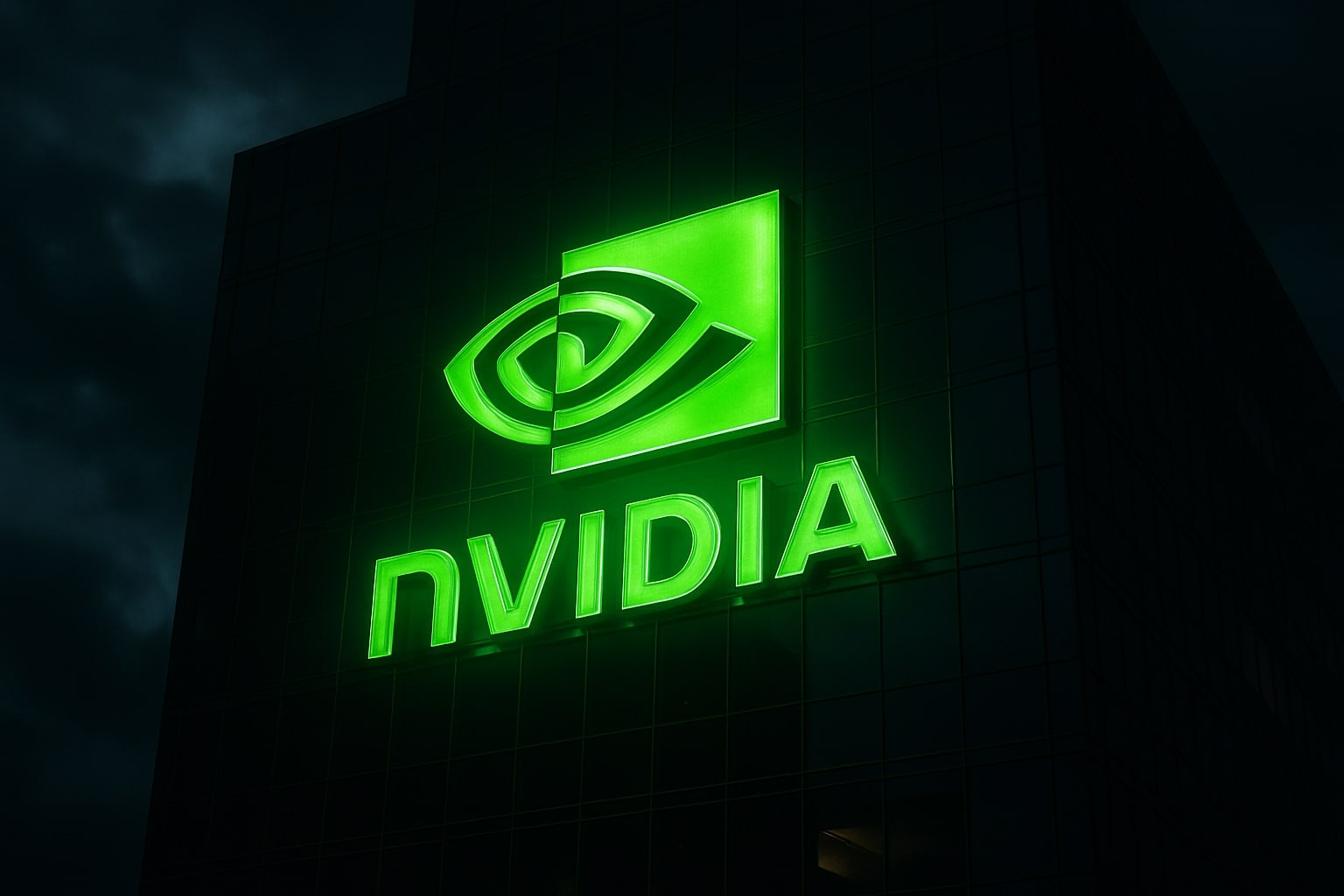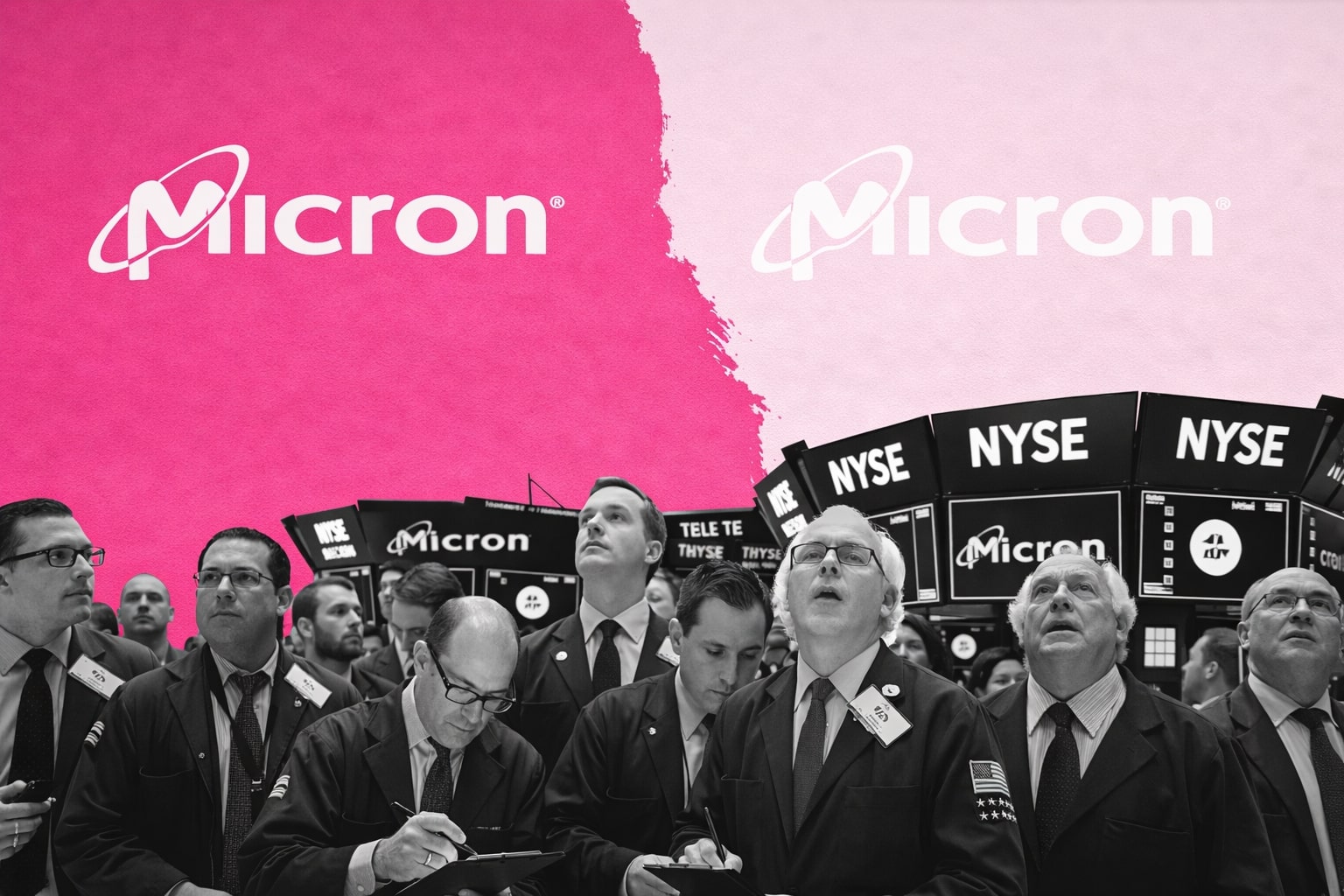NVIDIA (NASDAQ:NVDA) Pushes Higher to $202.49 as AI Dominance Expands and Market Cap Nears $5 Trillion
NVIDIA Corporation (NASDAQ:NVDA) continues to define the AI era, trading at $202.49, up 0.16%, with a market capitalization of $4.92 trillion, positioning it as the most valuable semiconductor company in history. The 52-week range from $86.63 to $212.19 highlights the speed of its rally, while the company’s P/E ratio of 57.63 reflects premium valuation for a firm that has redefined computing architecture. Despite marginal after-hours gains of $0.13 to $202.62, institutional demand remains intense ahead of the upcoming Q3 earnings report on November 19, where the market expects confirmation of over $46.74 billion in quarterly revenue and $26.42 billion in net income, representing 55.6% and 59.18% year-over-year growth, respectively.
AI Infrastructure Expansion Drives Explosive Growth
NVIDIA’s growth trajectory is directly tied to the unprecedented capital expenditures by major hyperscalers — Microsoft, Meta, Amazon, and Alphabet — all scaling AI infrastructure through 2026. CEO Jensen Huang confirmed during the GTC 2025 keynote that the company already has half a trillion dollars in cumulative orders for its Blackwell and early Rubin platforms, with more than six million Blackwell units shipped within four quarters of production. This pipeline represents roughly five times the growth rate of the Hopper generation, establishing a new baseline for AI compute expansion. The company estimates the total AI infrastructure addressable market could reach $3–$4 trillion by 2030, underpinned by increasing adoption of agentic and physical AI systems across data centers, robotics, and autonomous industries.
Financial Performance Signals Sustained Strength
In the July 2025 quarter, NVIDIA reported $46.74 billion in revenue, $26.42 billion in net income, and a 56.53% profit margin, highlighting exceptional operating leverage. Operating expenses rose 37.67% year-over-year to $5.41 billion, yet earnings per share jumped 54.41% to $1.05, reflecting efficient cost scaling. The company maintains $56.79 billion in cash and short-term investments, with total assets at $140.74 billion and shareholder equity of $100.13 billion, giving a price-to-book ratio of 49.35. Return on assets sits at 53.46%, while return on capital reaches 69.41%, underscoring NVIDIA’s extraordinary profitability in a sector typically characterized by heavy capital costs.
Blackwell Ultra and Rubin Platforms Redefine Compute Leadership
The Blackwell Ultra architecture represents a generational leap, introducing dual-die integration, NVFP4 acceleration, and massive memory capacity to enable AI factories capable of training models at previously impossible scales. This architecture supports NVIDIA’s flagship GB200/GB300 NVL72 supernodes that merge Grace CPUs and Blackwell GPUs, providing unparalleled performance for AI inference and large-language-model training. Looking ahead, the Rubin platform is set to enter production in 2026, marking the third-generation NVLink 72 rack-scale system. Huang emphasized that NVIDIA will now release a new platform every 12 months, ensuring continuous performance gains and cost reductions per generated token — a cadence unmatched by any competitor.
Strategic Partnerships Accelerate Ecosystem Expansion
NVIDIA’s expansion strategy is anchored by deep alliances across the AI supply chain. Recent partnerships include a $100 billion collaboration with OpenAI, where NVIDIA both invests in and supplies the hardware backbone for the next generation of LLM infrastructure. The company has also secured joint ventures with Nokia to integrate AI into 5G and 6G networking, leveraging NVIDIA’s Grace architecture to process data at the network edge. Meanwhile, alliances with Uber for autonomous mobility and Meta for large-scale training solidify its presence across multiple verticals. These strategic integrations extend NVIDIA’s footprint beyond the data center — embedding its GPUs into telecommunications, robotics, and cloud edge environments.
AI at the Edge and Physical AI Fuel the Next Growth Phase
The next growth catalyst for NASDAQ:NVDA lies in edge computing and physical AI. As industries demand real-time inference and autonomy, NVIDIA’s H200 Tensor Core GPU and RTX PRO 6000 series are gaining traction across robotics, healthcare, manufacturing, and smart-city infrastructure. Each GPU deployment pushes intelligence closer to the data source, reducing latency and energy costs. With AI now integrated into IoT, 6G networks, and industrial automation, NVIDIA’s edge solutions position the company at the heart of the next industrial transformation. The company forecasts that AI edge and physical AI markets will together exceed $1 trillion by 2030, complementing its core data-center business.
Cash Flow, Balance Sheet, and Investment Efficiency
Despite the explosive growth, NVIDIA maintains a disciplined financial model. In the latest quarter, cash from operations rose 6.05% to $15.37 billion, while free cash flow totaled $6.66 billion, down 31.11% due to elevated R&D and AI infrastructure spending. Net change in cash was negative $3.6 billion, reflecting high reinvestment levels rather than operational weakness. The company continues to prioritize innovation over dividends, maintaining a minimal 0.02% yield while funding long-term projects like quantum research and AI-driven networking systems.
Valuation Perspective and PEG Discount Opportunity
At $202.49 per share, NVIDIA trades at roughly 45x forward earnings and 20x two-year-forward P/E, metrics consistent with past valuation cycles despite a 64% share price increase since January 2025. The company’s PEG ratio remains 23% below its five-year average and 30% below sector median, signaling undervaluation relative to its growth trajectory. In contrast, Microsoft (NASDAQ:MSFT) trades at a 62% PEG premium, reinforcing that NVIDIA’s valuation is still supported by fundamentals. Analyst Ananda Baruah of Loop Capital recently raised the 12-month price target to $250, projecting a $6 trillion market cap by 2026 as the company monetizes its GPU leadership.
Revenue Pipeline and Market Share Dominance
NVIDIA commands a 94% market share in discrete GPUs, with rival AMD holding just 6%. This dominance ensures stable pricing and margin protection even as hyperscalers build in-house AI chips. The company projects 2026 revenue above $207 billion, with growth exceeding 20% annually into 2028. Recent data upgrades show 2028 growth expectations at 22.7%, up from 14.4% earlier in the year. With data-center demand, AI inference workloads, and government contracts driving GPU orders, NVIDIA’s forward visibility exceeds that of any peer in semiconductor history.
Competitive Landscape and Margin Compression Risks
While NVIDIA’s moat remains substantial, rising competition from Amazon’s Trainium and Google’s TPU architectures poses margin risks. Gross margin has declined slightly to 70%, and operating margin now sits near 58%, down from peaks above 60%. Higher fabrication costs from TSMC’s Arizona fabs may further pressure margins in 2026, especially if pricing power softens. Nonetheless, the company’s operating scale, proprietary CUDA ecosystem, and AI software integration (including NIM and TensorRT) offer long-term protection against commoditization.
AI CapEx Wave and Global Industrial Implications
AI capital expenditures are projected to reach $2 trillion by 2028, compared with $650 billion in 2025, as reported by Bank of America. NVIDIA sits at the center of this cycle, supplying compute systems to every major hyperscaler. Amazon’s CapEx alone will exceed $550 billion in 2026, up 24% year-over-year, and much of that will be directed toward NVIDIA-powered data centers. Global demand for GPUs now scales beyond tech giants — governments and sovereign AI programs have become significant buyers, ensuring sustained order flow through the decade.
Macroeconomic Context and Earnings Catalysts
NVIDIA’s resilience persists despite rising bond yields and trade restrictions. Following the U.S. export ban to China, the company diversified demand through Middle East and India data-center contracts, mitigating lost revenue streams. Its next earnings report on November 19 will be pivotal, expected to confirm quarterly EPS above $1.05 and revenue near $47 billion. Analysts forecast FY2026 earnings growth of 35–40%, with sequential margin recovery as the Rubin architecture reduces production cost per chip.
Investment Outlook and Strategic Verdict for NASDAQ:NVDA
NVIDIA’s fundamentals remain unmatched across Big Tech. The company’s $4.92 trillion valuation, $26.42 billion quarterly profit, and commanding 94% GPU market share demonstrate that its rally is grounded in data, not hype. Even with margin pressures and competitive threats, the firm’s technological cadence — annual platform releases, software lock-in, and deep ecosystem partnerships — sustains its dominance. The combination of undervalued PEG metrics, record order visibility, and trillions in future AI spending supports a decisive stance: NVIDIA (NASDAQ:NVDA) remains a BUY, targeting $250 per share within 12 months and a potential $6 trillion market cap as the AI economy scales toward 2030. For live tracking, see NVDA real-time chart.
That's TradingNEWS



















